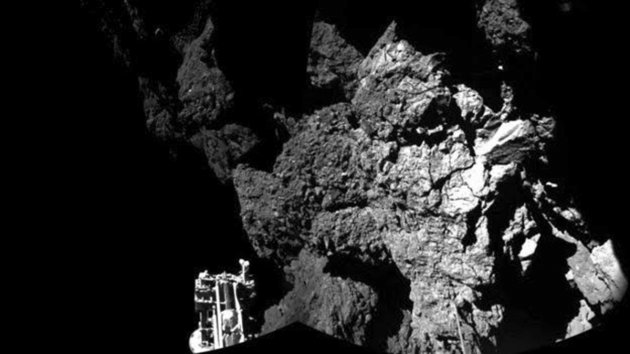That the Space Agency could even predict with such accuracy when the first signal from Philae would reach Earth to confirm that landing after the suspenseful detachment from its mother ship Rosetta is nothing short of amazing; they predicted the first signal would come in at 11:03 a.m. and so it did on Wednesday, November 12. Capping a journey and an intent beyond mere imagination of even the most feverishly aware science fiction writer.
"We are on the comet. We are sitting on the surface and Philae is talking to us", announced the lander manager, Dr. Stephan Ulamec. "It's complicated to land on a comet. It's also complicated to understand what has happened during the landing. What we know is that we touched down and we landed on the comet We had a very clear signal and we also received data from the lander. That is the very good news.
"The not-so-good news is that the anchoring harpoons did not fire So the lander is not anchored to the surface. Did we just land in a softsand box and everything is fine? Or is there something else happening? We still do not fully understand what has happened.
"Some of the data indicated that the lander may have lifted off again. It touched down and was rebouncing. We saw data on the solar generator which could be interpreted that the lander lifted off and started to turn itself. About two hours later this information of turning stopped. So maybe today, we didn't just land, we landed twice."
Twice indeed; the initiating bounce sent Philae into a seven-hour-long lift-off from which it returned to the comet finally, to rest under the shade of a cliff in that landscape of house-sized boulders, craters and alien cosmic rockface. The little science laboratory went right to work, sending back reams of data to the excited scientific minds sifting through it all, beyond joyful at the success of the mission. With the realization that because of where the little lab had finally landed its solar-fuelled generators would soon lapse into deep sleep for lack of sunlight, under the shade of that great cliff.
Even trying to imagine the cold black indifference of outer space, and a space ship hurtling purposefully through it all to finally put a distance of a half-billion kilometres between itself and Earth, to obey instructions it received from the command centre in Darmstadt, Germany to focus on landing on the surface of a speeding comet, everything depending on precise follow-up, boggles the mind. Let alone the design of the ship and its landing cargo, and the inputting of instructions for geological-scientific retrieval data to be beamed back to Earth.
The dazzling enormity of the wonder of human inquisitiveness aligned with the magnitude of human scientific ingenuity is difficult to quite comprehend. The colossal wonder that is Nature, and the incredible functioning capabilities that she endowed Earthling human beings with to enable them to explore her magnificent house of existence reflects a reality resistant to complete mindful digestion.

A probe named Philae is seen after it landed safely on a comet in this CIVA handout image
No comments:
Post a Comment